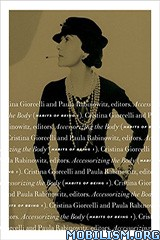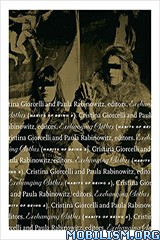Habits of Being by Cristina Giorcelli, Paula Rabinowitz (#1-4)
Requirements: .PDF reader, 21 mb
Overview: The four-volume English-language series Habits of Being extracts more than forty of the best essays from the ongoing editions of Abito e Identita: Ricerche di storia letteraria e cul-turale, edited by Cristina Giorcelli and published since 1995 by Edizioni Associate (volumes 1-3) and Ila Palma Press (volumes 4-10) of Rome, Italy, augmenting these Italian essays with a few newly commissioned pieces and with examples of work by contemporary artists who explore the interface between text and textile. The result of fifteen years of research by international teams of scholars from Algeria, France, Hungary, Italy, and the United States, the series focuses on the multiple forms and meanings attached to various articles of clothing in literature, film, performance, art, and other cultural arenas as well as on the social, economic, and semiotic connotations of clothing. Bringing together literary and film critics, art and fashion historians, semioticians, sociologists, historians, and ethnographers, as well as psychoanalysts and fashion designers, these volumes offer an English-speaking audience a rare glimpse of the important work now published in Italy, that most modish of nations.
Genre: Non-Fiction > General



1. Accessorizing the Body
The first in the four-part series Habits of Being, charting the social, cultural, and political expression of clothing as seen on the street and in museums, in films and literature, and in advertisements and magazines, this volume features a close-up focus on accessories—the shoe, the hat, the necklace—intimately connected to the body.
These essays, most of which have appeared in the cutting-edge Italian series Abito e Identità, offer new theoretical and historical takes on the role of clothing, dress, and accessories in the construction of the modern subject. With contributions by leading scholars in art history, semiotics, literary and film studies, history and fashion studies, and with additional writings by psychoanalysts, textile artists, and fashion designers from Europe and America, readers will encounter a dizzying array of ideas about the modern body and the ways in which we dress it.
From perspectives on the “model body” to Sonia Delaunay’s designs, from Fascist-era Spanish women’s prescribed ways of dressing to Futurist vests, from Barbara Stanwyck’s anklet to Salvatore Ferragamo’s sandals, from a poet’s tiara to a worker’s cap, from the scarlet letter to the yellow star: Accessorizing the Body imparts startling insights into how much the most modest accessory might reveal.
2. Exchanging Clothes
Clothing may not make the man (or woman), but it helps. How clothing as a vestige and artifact and as transmitter of identity moves from one use to another, from one fantasy to another fad, from one literary source to another visual one: these are the concerns of the essays in this volume.
The second in a four-part series charting the social, cultural, and political expression of clothing, dress, and accessories, Exchanging Clothes focuses on the concept of transnational “circulation and exchange”—not only the global exchange of material commodities across time and space but also of the ideas, images, colors, and textures related to fashion. Essays examine the parade of heroes past, from Homer and Virgil to Dante and Ariosto, wearing armor or nothing; the social power of a tie or of a safety pin sprung from punk fashion to the red carpet; a Midwestern thrift store, from cheap labor to cheap purchase, as a microcosm of global circulation; and lesbian pulp fiction as how-to-dress manuals.
Whether looking at Kate Chopin’s silk stockings, Nellie Bly’s capacious bag, Audrey Hepburn’s cross-Atlantic travels, rings in James Merrill’s poetry, or feminine ornaments in Algeria, these essays offer an ever-expanding vision of how fashion moves through culture and the economy, reflecting and determining identity at every stage and turn of the transaction.
3. Fashioning the Nineteenth Century
In nineteenth-century Europe and the United States, fashion—once the province of the well-to-do—began to make its way across class lines. At once a democratizing influence and a means of maintaining distinctions, gaps in time remained between what the upper classes wore and what the lower classes later copied. And toward the end of the century, style also moved from the streets to the parlor. The third in a four-part series charting the social, cultural, and political expression of clothing, dress, and accessories, Fashioning the Nineteenth Century focuses on this transformative period in an effort to show how certain items of apparel acquired the status of fashion and how fashion shifted from the realm of the elites into the emerging middle and working classes—and back.
The contributors to this volume are leading scholars from France, Italy, and the United States, as well as a practicing psychoanalyst and artists working in fashion and with textiles. Whether considering girls’ school uniforms in provincial Italy, widows’ mourning caps in Victorian novels, Charlie’s varying dress in Kate Chopin’s eponymous story, or the language of clothing in Henry James, the essays reveal how changes in ideals of the body and its adornment, in classes and nations, created what we now understand to be the imperatives of fashion.
4. Extravagances
This final volume in the four-volume series Habits of Being shows how the dialectic between everyday appearance and outrageous acts is mediated through clothing and accessories. It considers how clothing and accessories can move quickly from the ordinary to the extravagant. Employing many different approaches, these essays explore how wearing an object—a crown, a flower, an earring, a corsage, a veil, even a length of material—can stray beyond the bounds of the body on which it is placed into the discrepant territory of flagrantly excessive public signs of love, status, honor, prestige, power, desire, and display.
The varied contributions of scholars (historians, ethnographers, literary and film critics) and artists (photographers, sculptors, writers, weavers, and embroiderers) take up the threads of these forays into history, psyche, and aesthetics in surprising and useful ways. With examples from around the world, contributors address how the simple action of ornamenting the body, even with something as common as a button, are open to elaborate interpretations—which themselves offer new understandings of human behavior and artistic endeavor. When our “habits of being” receive close scrutiny, they seem anything but habitual.
Download Instructions:
http://2bay.org/a9010b937840c38cbeefebb … e650ab5932
https://rapidgator.net/file/de6ff7f9d15 … g.rar.html


